Table of Contents
SaaS Management maturity is more than a milestone—it’s a measurable indicator of how effectively your organization is controlling SaaS sprawl, spend, and risk. For IT, SAM, and Procurement leaders, recognizing the need for a SaaS Management program is just the beginning. The real impact comes from scaling that program and advancing its maturity through a structured, strategic effort.
Zylo’s Enterprise SaaS Management Framework offers a proven crawl-walk-run model to help you build toward a fully optimized SaaS environment.
Why SaaS Management Maturity Matters More Than Ever
Organizations now manage an average of 275 SaaS applications and spend $49M annually. Year over year, per-employee SaaS spend has jumped 22%, reaching $4,830. Despite this, companies underestimate their SaaS spend by an average of 304%, according to the 2025 SaaS Management Index.
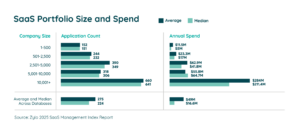
Unmanaged SaaS leads to more than budget bloat. Gartner warns that organizations lacking centralized SaaS visibility will overspend by at least 25% and face a fivefold increase in exposure to cyber threats.
This is no longer a problem for IT to solve alone. SaaS impacts Finance, Security, HR, and every team relying on software to achieve results. Maturity isn’t a nice-to-have—it’s a requirement for operational clarity and business continuity.
What Is SaaS Management Maturity?
SaaS Management maturity reflects how intentionally your organization manages the SaaS lifecycle—from discovery and governance to cost optimization and strategic alignment. A mature program provides centralized visibility, accountability, and efficiency across every app, user, and dollar.
Traditional frameworks fall short in the SaaS era:
- SAM models are built for static, on-prem software environments.
- The FinOps Framework focuses on cloud infrastructure but offers limited guidance on SaaS-specific challenges.
In contrast, a SaaS Management maturity framework accounts for decentralized ownership, shadow IT, frequent renewals, and dynamic licensing needs. It aligns visibility and governance with the real-world complexity of how software is bought and used today.
Comparing SaaS, SAM, and FinOps Frameworks
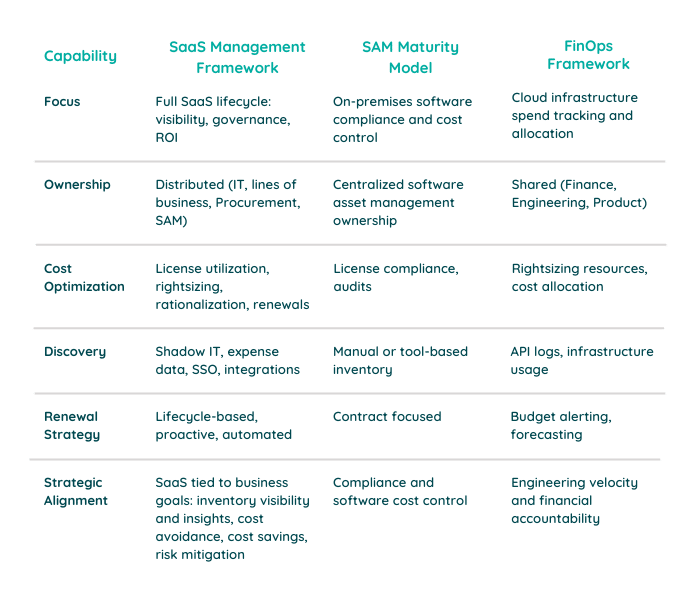
The SaaS Management Maturity Framework: Crawl, Walk, Run
Zylo’s Enterprise SaaS Management Framework outlines a crawl-walk-run path that scales with your organization. Each phase is built on the last, creating a foundation of data, process, and automation.
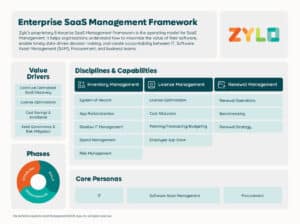
Let’s explore what each phase includes.
Phase 1: Crawl – Gain Visibility and Establish a Foundation
The crawl phase focuses on visibility—without it, optimization isn’t possible. Organizations often uncover hundreds of unmanaged or unknown apps. The first step is centralizing data from AP systems, SSO, and business units to create a living system of record.
Prioritize Tier One applications—those with high spend, high risk, and broad usage or sensitive data exposure. These typically include collaboration suites, CRM platforms, or project management software.
Quick wins (such as user-based license reclamation) are essential for validating your program and demonstrating early ROI.
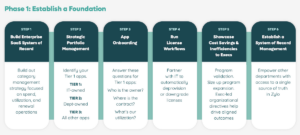
Key Actions in Phase 1
- Deploy a SaaS Management Platform (SMP) like Zylo to unify contract, spend, and usage data.
- Identify and classify apps by tier using centralized insights.
- Assign ownership to Tier One apps.
- Reclaim unused licenses and rightsize at renewal.
- Create initial dashboards and reports to showcase savings.
- Enable access to your system of record for key stakeholders.
“With Zylo, we achieved central visibility into our purchases, contracts, and utilization data… key to helping business owners make better decisions.”
— Renee Turco, Technology Asset Manager, AbbVie
The No-BS SaaS Management Playbook
Learn MorePhase 2: Walk – Build Your SaaS Management Program
With visibility in place, the walk phase builds repeatable processes. SaaS Management becomes a formal initiative, not an informal side task. This phase shifts the organization from a reactive to a programmatic approach.
Departments begin onboarding their own (Tier Two) apps, and IT/Procurement jointly implement policies for intake, provisioning, and renewals. Risk reduction and cost control become embedded in workflows.
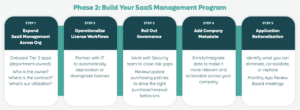
Key Actions in Phase 2
- Onboard Tier Two applications and assign clear ownership.
- Automate license workflows for provisioning and deprovisioning.
- Implement SaaS governance policies and intake forms.
- Consolidate redundant tools through application rationalization.
- Set budget alerts and forecasting models.
- Standardize procurement support and offboarding processes.
Zylo supports this stage with automation, usage insights, and policy controls that enable cross-functional coordination and faster execution.
“Reducing licensing waste improves efficiency, simplifies our tech stack, and enhances the employee experience.”
— Trenton Cycholl, VP, Digital Business, Modernizing Medicine
Evolving Your SaaS Governance Framework for the Digital Workplace
Learn MorePhase 3: Run – Operationalize SaaS Management
In the run phase, SaaS Management becomes fully embedded into your company’s operations. Your system of record now powers planning cycles, renewals, and cost forecasting.
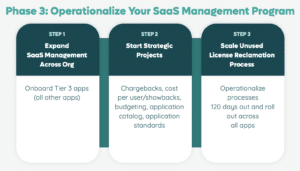
Key Actions in Phase 3
- Onboard remaining Tier Three apps to complete coverage.
- Launch an internal application catalog and enable cost-per-user chargebacks.
- Establish renewal timelines at 120, 90, 60, and 30 days prior to expiration.
- Automate provisioning and deprovisioning processes.
- Monitor budgets and long-tail app usage.
- Consolidate overlapping tools and contracts at renewal.
Zylo enables continuous optimization by embedding workflows, automating license reclamation, and surfacing insights to drive proactive decisions.
“Leveraging Zylo, we created an online software catalog of approved titles… significantly reduced sprawl and created a unified procurement process.”
— Vinod Vishwan, Sr. Director, Business Planning & Ops, Adobe
Assessing Your SaaS Management Maturity
Understanding your maturity level starts with a candid evaluation of your current capabilities. Use these questions to benchmark where you stand—and where to go next:
Do we have full visibility into all active apps?
If apps are being purchased and used without centralized oversight, you’re likely missing critical spend, risk, and usage data. Shadow IT thrives in the absence of discovery tools, and manual tracking methods fall short in fast-moving SaaS environments.
Are renewals planned in advance with ownership assigned?
Missed or last-minute renewals often lead to overpayment, lost leverage in negotiations, or unintended service lapses. Assigning clear renewal ownership ensures accountability, creates a renewal runway, and allows data to inform decisions.
Are we tracking and acting on utilization trends?
Licensing without insight leads to overspend. If you’re not regularly analyzing usage data, you risk paying for unused seats, underutilized tiers, or misaligned licenses across departments.
Is SaaS data used in budgeting and forecasting?
SaaS spend should be part of your broader financial strategy. Integrating app-level usage, ownership, and cost data into your planning cycles gives Finance the clarity to model, optimize, and align technology investments with business goals.
If you answered “no” to any of the above, your next step is to stabilize your program at the appropriate phase—starting with visibility and building toward full operational maturity.
Organizational Benefits of SaaS Management Maturity
Maturity doesn’t just make SaaS easier to manage—it unlocks measurable business value across the enterprise.
Finance
Gain real-time accuracy in forecasting, budgeting, and cost allocation. License utilization metrics enable smarter investment decisions and help eliminate unplanned software expenses, thereby improving financial control and predictability.
Procurement
Use data to negotiate renewals from a position of strength. With clear benchmarks and license insights, Procurement can rightsize contracts, avoid shelfware, and improve supplier performance metrics during Quarterly Business Reviews (QBRs).
Security
A centralized inventory reduces shadow IT, enforces application standards, and supports secure onboarding and offboarding processes. Identity and access management are more effective when tied to a unified system of record.
HR & Operations
Standardized access and application catalogs ensure employees get what they need without friction. This improves time-to-productivity for new hires and minimizes operational delays during transitions.
IT
Shift from tactical ticket handling to strategic technology enablement. A mature SaaS Management program allows IT to align app portfolios with business needs, support digital transformation, and show the ROI of its initiatives.
Organizations that reach maturity reduce operational risk, drive better collaboration, and extract maximum value from every SaaS dollar.
Getting Started: Focus on What Matters First
You don’t need to fix everything at once. Start where the return is highest and the visibility gap is widest. These actions offer the strongest foundation for long-term success:
- Tier One apps with high spend or risk: These often include enterprise collaboration, CRM, or cloud storage tools that have a significant financial or operational impact.
- Consolidating data into a system of record: Unify contracts, usage, SSO, and financial data into a single source to power every downstream process.
- Assigning ownership and roles across departments: Clear ownership unlocks accountability, speeds up decisions, and ensures renewals and usage tracking don’t fall through the cracks.
- Launching basic procurement governance workflows: Intake forms, approval paths, and provisioning policies help reduce shadow IT and standardize purchasing decisions.
- Automating renewals and license reclamation processes: Eliminate manual cycles by using data to drive proactive license rightsizing and renewal calendar alerts.
These initial moves provide your organization with the insight, controls, and savings necessary to demonstrate value and scale effectively.
Maturity Is About Momentum
Reaching SaaS Management maturity doesn’t mean your work is done. It means your processes, tools, and teams are built to adapt to change, whether that’s new acquisitions, evolving business units, or emerging security requirements.
The goal isn’t perfection—it’s consistency. With every new optimization, you reduce waste, minimize risk, and align software investments more closely with business outcomes.
Zylo provides the platform, data, and expertise to help you advance at every stage of this journey—from discovery to optimization to strategic planning. Request a demo to see how Zylo helps organizations evolve their SaaS Management maturity and turn insight into action.


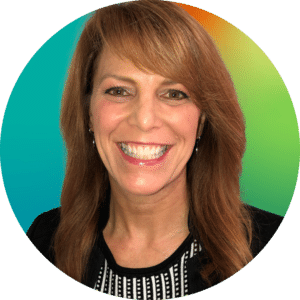 — Renee Turco, Technology Asset Manager, AbbVie
— Renee Turco, Technology Asset Manager, AbbVie — Trenton Cycholl, VP, Digital Business, Modernizing Medicine
— Trenton Cycholl, VP, Digital Business, Modernizing Medicine — Vinod Vishwan, Sr. Director, Business Planning & Ops, Adobe
— Vinod Vishwan, Sr. Director, Business Planning & Ops, Adobe